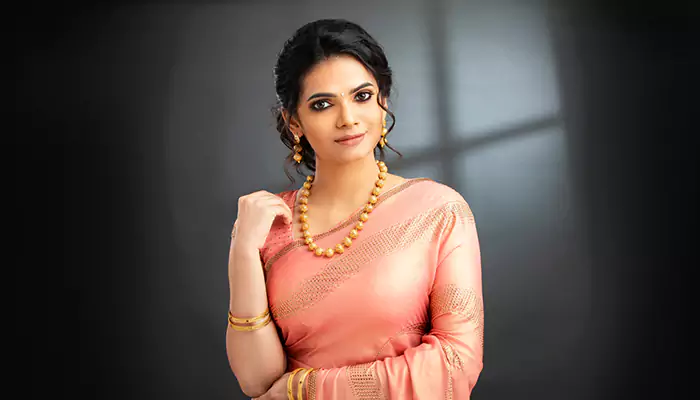Timeless threads: The oldest sarees you didn’t know about (but we bet you’ll want to!)
Ever wondered how vintage your wardrobe is? Check out these ancient sarees and see how classic your style really is!
- Jayati
- 16 May, 2025
- 2 mins ago

Timeless threads: The oldest sarees you didn’t know about (but we bet you’ll want to!)
Ever wondered how vintage your wardrobe is? Check out these ancient sarees and see how classic your style really is!
Sarees have been around for thousands of years, and it’s pretty amazing how this traditional garment has stood the test of time. Originally from the Indus Valley civilisation around 2800–1800 BC, sarees were initially made from cotton. Over the years, they've evolved into so many different styles, depending on the region, fabric, and craftsmanship. So, if you’re into fashion with a rich history, exploring the different types of sarees is like taking a stylish trip back in time!
Ajrakh Saree
Origin: Gujarat and Rajasthan
Age: Over 4,500 years
Ajrakh sarees are really something special. They use resist printing with natural dyes to create those bold patterns and colours. The name “Ajrakh” comes from the Arabic word for blue, reflecting the deep indigo that’s a big part of their look. With a history stretching back thousands of years, these sarees are a vibrant, timeless piece of fashion.
Bagh Saree
Origin: Madhya Pradesh
Age: Over 1,000 years
Bagh sarees are all about that handmade charm! They feature intricate block prints using vegetable dyes, with designs inspired by nature and the local environment in Madhya Pradesh. The earthy colours and unique patterns make Bagh sarees a beautiful example of traditional craftsmanship. These sarees are not just garments; they’re a celebration of regional heritage and artistry.
Chanderi Saree
Origin: Chanderi, Madhya Pradesh
Age: Over 700 years
Chanderi sarees are known for their light, sheer texture and stunning zari work. They often feature traditional motifs like flowers, peacocks, and geometric patterns, hand-woven from silk, cotton, or silk-cotton blends. Favoured by royalty for centuries, Chanderi sarees still radiate timeless charm and sophistication.

Phulkari Saree
Origin: Punjab
Age: Over 700 years
Phulkari sarees are like a burst of joy in fabric form! With their vibrant colours and intricate floral embroidery, they bring the lively spirit of Punjab right to your wardrobe. This style took off back in Maharaja Ranjit Singh's era and is still cherished for its rich cultural vibe.
Patola Saree
Origin: Patan, Gujarat
Age: Over 700 years
Patola sarees are like wearable masterpieces! They’re super colourful and intricate, thanks to the amazing double Ikat weaving process. You’ll spot beautiful floral, animal, and geometric designs on them. Not only are they stunning, but they’re also quite rare and pricey, often kept as family treasures. Made by the Salvi people from Karnataka and Maharashtra, Patola sarees are definitely worth having in your wardrobe.
Kanjeevaram Saree
Origin: Kanchipuram, Tamil Nadu
Age: Over 500 years
Kanjeevaram sarees are made from soft silk and stand out for their vibrant colours and elaborate weaves. Featuring traditional motifs like flowers, peacocks, and elephants, they highlight South India’s cultural richness. These sarees are pretty heavy, weighing around 2 kilos, which is pretty rare these days! They’re a top pick for brides and are all about pure elegance!
Kota Doria Saree
Origin: Kota, Rajasthan
Age: Over 300 years
Kota Doria sarees are known for their airy, open weave and delicate square patterns, or “Khats.” Made from cotton, silk, or blends, they’re lightweight and ideal for hot weather. Simple yet elegant, they often feature traditional motifs like mangoes and flowers.
Banarasi Silks
Origin: Varanasi, Uttar Pradesh
Age: Over 200 years
Banarasi sarees are a true gem with their beautiful craftsmanship and rich brocade patterns in gold and silver. You’ll spot Mughal-inspired flowers and intricate designs that mix Persian and Indian styles. They’re perfect for weddings and special events, and definitely add a touch of classic charm!
The saree is truly a point of pride for our country, and its timeless appeal never fades. From ancient times to now, it’s still going strong and gaining popularity all around the world!









